Holding the fort
Prestige PR
Włodarzewska 81C lok 81
02-393 Warszawa
i.wisniewska|prestigepr.pl| |i.wisniewska|prestigepr.pl
508 927 958
www.prestigepr.pl
Property investment market in Poland. Q1 2024 report.
Author: Paulina Brzeszkiewicz-Kuczyńska, Research and Data Manager at Avison Young
Full basket, low tickets
The most significant challenge over the past two years has been the disparity in price expectations between sellers and buyers.
Some wanted to sell at pre-pandemic prices, while others sought discounts due to current market condition. This discrepancy often delayed the finalization of many transactions. However, such an impasse was unsustainable, necessitating deals to occur.
Consequently, we are witnessing more compromises on pricing from both sides. While time has played a role in this adjustment, the market is still not witnessing significant discounts akin to those seen in other European countries. This reaffirms Poland’s robust and strong position in the international real estate arena. However, the Q1 2024 period ended with EUR 364 million of total investment volume, what is the weakest start in recent years. What is interesting, 25% of the invested capital comes from Polish investors.
The warehouse sector continues to lead the Polish investment market, being responsible for 38% of total investment volume. Unchangeably, vast majority of office transactions took place in Warsaw, while retail investment was again dominated by the retail park product. The market saw also two deals closed in Warsaw in the living sector and two hotels sold in touristic cities by the seaside. In Q1 2024 the market kept the moderate liquidity, while the opportunistic character of the sold assets determined the low investment volume.
Highlights:
- EUR 364 million – total investment volume in Q1 2024
- 24 transactions
- moderate liquidity despite low investment volume
Industrial sector
Industrial investors waiting for bigger discounts
In the warehouse sector, the disparity between the price expectations of sellers and buyers is particularly visible. While transactions are occurring, their scale is somewhat limited due to this misalignment. “Investors seem to be taking longer to reconcile their price expectations, and there is a notable absence of major players capable of executing large-scale deals exceeding EUR 100 million.” – points out Bartłomiej Krzyżak, Senior Director, Investment at Avison Young.
In Q1 2024 industrial sector saw 6 closed deals, totalling EUR 138 million. Thus, industrial market represented the highest share (38%) in the volume transacted in Poland in the analysed period. The biggest transaction recorded, not only regarding warehouse sector but the whole investment market, was the portfolio acquisition of two Warsaw West Parks by Hillwood from DWS. This deal was responsible for 40% of the sector’s volume.
The stabilisation of the economic situation in Poland in 2024 will allow for increased investors’ activity. The market is moving towards a price consensus, which is expected by all market participants. Aligning their expectations of investment returns with the dynamics of changing rental levels, financing costs and property valuations may result in higher volumes in the upcoming quarters.
Highlights:
- EUR 138 million – total volume in the industrial sector in Q1 2024
- 4/6 – deals regarding the big five industrial hubs
- 1 portfolio transaction
Office sector
Nothing but Warsaw
Are offices in crisis? While there remains an appetite for office assets, the market is highly selective, with investors carefully seeking out opportunities. Deals are taking longer to materialize. Interestingly, 2023 saw a surge in completed transactions in Warsaw, but we observe now growing investor interest in regional cities as well, evidenced by ongoing discussions between sellers and buyers.
Nevertheless, it was office properties in Warsaw that were targeted by investors at the beginning of the year. Interestingly, 5 out of 7 acquired office buildings in Warsaw are situated outside the city centre, in the area of Służewiec, Żwirki and Wigury Corridor, and the West office zone. Total office investment volume of EUR 107 million was associated with value-add and opportunistic assets, indicating a growing trend towards the redevelopment into new functions, particularly residential. This trend is underscored by 2 closed transactions specifically focused on redevelopment for residential and PBSA purposes, namely Curtis Plaza and Lipowy Office Park C&D. The sole transaction in regional markets occurred in the Wrocław, with Avison Young advisors representing the buy-side.
“Notably, there is a noticeable absence of core capital, with more activity seen among value-add and opportunistic investors, who are prudent in their approach and seek out opportunities without overpaying for assets. The Avison Young team has several compelling office deals available for sale and is actively seeking capital interested in such assets.” – comments Marcin Purgal, Senior Director, Investment at Avison Young.
The key to revitalizing the office sector will likely be a reduction in interest rates, which would spur a return of larger scale office building transactions.
Highlights:
- EUR 107 million – total investment volume in the office sector in Q1 2024
- 7/8 transactions in Warsaw
- 2 transactions dedicated for living development
Retail sector
Retail parks growing bigger
The retail sector, particularly the retail park and convenience segment, remains a focal point in the real estate discussions. In 2023, retail parks and convenience facilities made up 56% of the sector’s total investment volume, also representing about half
of all transactions. As of Q1 2024, Poland has already seen 4 transactions involving such assets, with Avison Young playing a prominent role as the advisor on the selling side. Furthermore, additional projects are slated for finalization in the near future.
The most active buyer was Polish TERG, which is developing its Aura Park retail park chain.
Interestingly, 3 of 4 retail parks sold exceed 5,000 sqm of GLA and are new developments (less than 2 years on the market), what confirms the noticeable shift towards larger projects. Currently, there are 37 bigger retail parks (GLA > 5,000 sqm) either being built or expanded, including 6 that exceed 20,000 sqm. Despite retail parks, which stood for 81% of retail investment volume in Q1 2024 period, two remaining transactions regarded Galeria Sandecja in Nowy Sącz acquired by Focus Estate Fund and Tesco in Góra Kalwaria dedicated for redevelopment and change of function.
“Retail parks continue to be regarded as a reliable and secure investment option, often offering a more cost-effective entry point, with the average transaction value typically ranging between EUR 5-15 million. What should be highlighted, despite challenges such as the COVID-19 pandemic, the war in Ukraine, and inflation, the retail sector has demonstrated remarkable agility in adjusting prices to meet buyers’ expectations.” – comments Artur Czuba, Associate Director, Investment at Avison Young.
Highlights:
- EUR 60 million – total volume in the retail sector in Q1 2024
- 4/6 transactions regarding retail parks
- shift to bigger retail parks (> 5,000 sqm)
PRS
New alliances, new projects
There is a noticeable trend towards the development of new collaboration models among investors, developers, and property owners. The market is actively seeking alternative solutions and transaction structures to facilitate investment. Consequently, we are witnessing the emergence of new platforms, such as those for Private Rented Sector (PRS) or student housing, and an increase in joint-venture projects. These collaborative efforts allow entities to share the investment costs, thereby enhancing liquidity and enabling the pursuit of additional projects or the expansion of scale directly.
Q1 2024 saw only two closed transactions on the PRS market, both regarding Warsaw. One of them involved NREP’s acquisition of the Noli Mokotów co-living project located in Służewiec from YIT Development. Additionally, Van Der Vorm purchased an entire residential building in the area of Praga. Looking ahead to Q2 2024, we anticipate the closure of another two transactions, both to be acquired by Heimstaden Bostad. On behalf of this investor, Avison Young Technical Advisory team supervises the construction progress of Wschodu Słońca project, which will deliver over 400 PRS units and will be one of the biggest PRS investments scheduled for 2024.
In 2024, the Private Rented Sector in Poland celebrates its 10th anniversary since the inaugural transaction in 2014, initiated by the Fundusz Mieszkań na Wynajem in Poznań. Although the PRS market in Poland is still at its emerging stage compared to its counterparts in Western Europe, we are witnessing its tremendous dynamics. Assuming that all projects due for completion in 2024 are finalized as planned, the market will experience a fivefold increase within five years. Worth noting, the regional markets are currently responsible for over half of the existing stock, as well as developments under construction.
Looking forward
A tentative, moderate optimism was noticeable in the mood at MIPIM. There was a lot of talk about Poland in the context of a stable, economically strong market, providing good conditions for real estate investment. As a result, we anticipate the entry of more new players into the Polish market this year.
Based on our own projects and discussions with other market participants, we observe that numerous properties across various sectors are currently in the bidding, due diligence, or even finalization phase. However, these projects are not large-scale or spectacular in nature; nevertheless, as the market conditions improve, we anticipate such projects to emerge.
Despite this, we remain optimistic about the number of transactions and hope that the investment volume in 2024 will surpass that of 2023, signalling growth in the subsequent years. Nonetheless, it is expected to take some time to return to the full liquidity seen in previous years.
Will it not get any worse? The market is currently awaiting a potential decrease in interest rates, anticipated in the second half of the year. This would signal the return of more affordable financing and likely stimulate increased investor activity. Presently, the main concern lies not in the availability of capital but rather in its cost.
Until interest rates begin to decline, the market is not expected to operate at its full capacity. However, once rates do decrease, we can anticipate a surge in purchasing activity. Therefore, those who are well-prepared, having thoroughly analysed the market and identified promising assets, will be poised to capitalize on this opportunity. Being better prepared than the competition to swiftly make offers and finalize deals will be crucial in emerging as winners in this scenario.
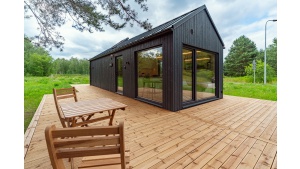
Łotewski producent wysokiej jakości domów prefabrykowanych wchodzi na polski rynek
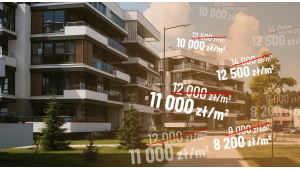
Deweloperzy ukrywają ceny mieszkań. Z troski o klientów czy swoje portfele?
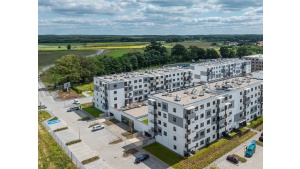
Więcej przestrzeni, mniej hałasu – dlaczego Polacy coraz częściej wybierają przedmieścia?
Więcej ważnych informacji
 Jedynka Newserii
Jedynka Newserii

 Jedynka Newserii
Jedynka Newserii

Polityka

Polska może się stać Doliną Krzemową Europy. Potrzeba jednak wsparcia finansowego start-upów i mocniejszej deregulacji
Polskie start-upy skoncentrowane są głównie na rozwoju nowoczesnych technologii informatycznych i cyfrowych. Wyraźny nacisk na oprogramowanie i aplikacje oraz big data i data science wskazuje na silne zainteresowanie narzędziami analitycznymi i rozwiązaniami wspierającymi transformację cyfrową w różnych branżach – wynika z raportu „Rynek start-upów w Polsce. Trendy technologiczne”, który został opracowany w 2024 roku w MRiT. Zdaniem europarlamentarzystów Polska ma szansę się stać Doliną Krzemową, jednak rozwój start-upów blokowany jest m.in. przez ograniczony dostęp do finansowania oraz niekorzystne i nadmierne regulacje.
Transport
Na półmetku wakacji ceny paliw na stacjach nie powinny się wyraźnie zmienić. Znaczące różnice między regionami i stacjami

W sierpniu ceny benzyny, oleju napędowego i autogazu powinny pozostać na poziomach z lipca – uważa ekspertka rynku z firmy Reflex. Wyższe będą zawsze na stacjach premium, tych, które oferują bogatszą ofertę dodatkową, promocje dla uczestników programu lojalnościowego, oraz w regionach, w których tradycyjnie paliwa są droższe ze względu np. na wyższą siłę nabywczą mieszkańców. Różnice mogą sięgać kilkudziesięciu groszy na litrze. Obszary, wokół których te wartości oscylują, zależą z kolei od sytuacji globalnej. Warto patrzeć na sytuację na Bliskim Wschodzie i w Ukrainie.
Polityka
A. Mularczyk (PiS): Nawiązanie poważnego dialogu z Niemcami jest konieczne nie tylko w kontekście reparacji. Powinien być podpisany traktat polsko-niemiecki

– Nie wystarczy jednorazowy gest czy inicjatywa. To musi być podjęcie dialogu, być może też przygotowanie nowej umowy bilateralnej, nowego traktatu polsko-niemieckiego, który regulowałby wszystkie obszary, które wynikały ze skutków II wojny światowej – mówi Arkadiusz Mularczyk, poseł do Parlamentu Europejskiego z PiS-u. Podkreśla, że proces ten nie będzie łatwy, bo wymaga konsekwencji i stanowczości, ale widzi szansę w prezydenturze Karola Nawrockiego, który już zadeklarował kontynuację starań w tym zakresie. Zdaniem europosła wsparciem w polsko-niemieckim dialogu może być administracja Donalda Trumpa.
Partner serwisu
Szkolenia
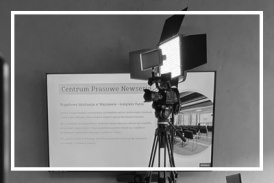
Akademia Newserii
Akademia Newserii to projekt, w ramach którego najlepsi polscy dziennikarze biznesowi, giełdowi oraz lifestylowi, a także szkoleniowcy z wieloletnim doświadczeniem dzielą się swoją wiedzą nt. pracy z mediami.




![Nestlé w Polsce podsumowuje wpływ na krajową gospodarkę. Firma wygenerowała 0,6 proc. polskiego PKB [DEPESZA]](https://www.newseria.pl/files/1097841585/fabryka-nesquik_1,w_85,r_png,_small.png)



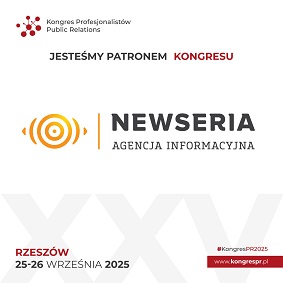
.gif)

 |
| |
| |
|